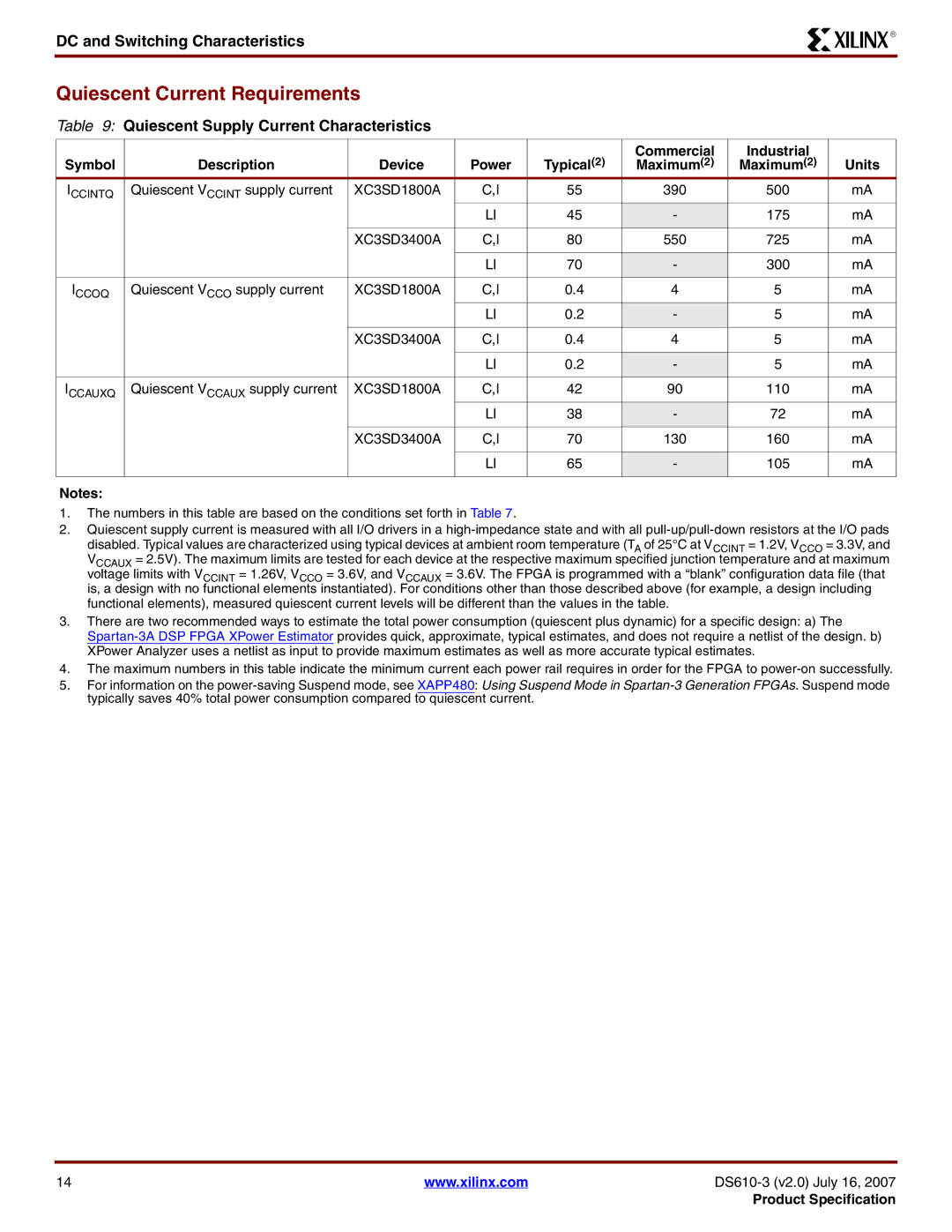
DC and Switching Characteristics
R
Quiescent Current Requirements
Table 9: Quiescent Supply Current Characteristics
|
|
|
| Typical(2) | Commercial | Industrial |
|
Symbol | Description | Device | Power | Maximum(2) | Maximum(2) | Units | |
ICCINTQ | Quiescent VCCINT supply current | XC3SD1800A | C,I | 55 | 390 | 500 | mA |
|
|
| LI | 45 | - | 175 | mA |
|
|
|
|
|
|
|
|
|
| XC3SD3400A | C,I | 80 | 550 | 725 | mA |
|
|
|
|
|
|
|
|
|
|
| LI | 70 | - | 300 | mA |
|
|
|
|
|
|
|
|
ICCOQ | Quiescent VCCO supply current | XC3SD1800A | C,I | 0.4 | 4 | 5 | mA |
|
|
| LI | 0.2 | - | 5 | mA |
|
|
|
|
|
|
|
|
|
| XC3SD3400A | C,I | 0.4 | 4 | 5 | mA |
|
|
|
|
|
|
|
|
|
|
| LI | 0.2 | - | 5 | mA |
|
|
|
|
|
|
|
|
ICCAUXQ | Quiescent VCCAUX supply current | XC3SD1800A | C,I | 42 | 90 | 110 | mA |
|
|
| LI | 38 | - | 72 | mA |
|
|
|
|
|
|
|
|
|
| XC3SD3400A | C,I | 70 | 130 | 160 | mA |
|
|
|
|
|
|
|
|
|
|
| LI | 65 | - | 105 | mA |
|
|
|
|
|
|
|
|
Notes:
1.The numbers in this table are based on the conditions set forth in Table 7.
2.Quiescent supply current is measured with all I/O drivers in a
disabled. Typical values are characterized using typical devices at ambient room temperature (TA of 25°C at VCCINT = 1.2V, VCCO = 3.3V, and VCCAUX = 2.5V). The maximum limits are tested for each device at the respective maximum specified junction temperature and at maximum voltage limits with VCCINT = 1.26V, VCCO = 3.6V, and VCCAUX = 3.6V. The FPGA is programmed with a “blank” configuration data file (that is, a design with no functional elements instantiated). For conditions other than those described above (for example, a design including functional elements), measured quiescent current levels will be different than the values in the table.
3.There are two recommended ways to estimate the total power consumption (quiescent plus dynamic) for a specific design: a) The
4.The maximum numbers in this table indicate the minimum current each power rail requires in order for the FPGA to
5.For information on the
14 | www.xilinx.com | |
|
| Product Specification |
